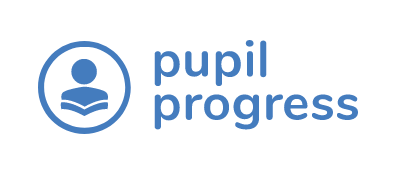The Head of Department’s Guide to Data in Schools

What You Need to Know About Data
In 2019 Ofsted released a new framework that changed how internal data is used in schools, leaving many Head of Department wondering what they needed to do. Here’s what you need to know:
Ofsted wants schools to demonstrate an understanding of how internal assessment data impacts pupil progression and teaching strategies. They’re not looking at your data to prove progress; instead, they’re interested in how you use it to identify where students are now and what steps are needed to move forward.
To demonstrate great practices and meet Ofsted expectations:
Share your assessment plan: Ensure your plan represents an efficient use of teachers’ time and resources. Be ready to explain why you’re conducting specific assessments and what actions will follow.
Use data effectively: Guide teachers to analyse and apply data in their classrooms. This ensures impactful actions are put into practice immediately.
Support leadership decisions: Use data to inform classroom strategies and
shape your departmental approach to help students make progress.

As Head of Department you’re already juggling a team of teachers, several classes of students, and pressure from above. Managing your data might feel like a time-intensive, tedious task on an endless to-do list - we’ve been there. But knowledge is power – or more accurately, understanding is power. When you truly understand how the data you’re collecting can impact individual student performance and your department’s results, everything changes.
Although it might feel overwhelming, getting on top of your data is closer than you think. You need an accurate, accessible view of your existing data so you can chart student performance in real time. This isn’t just a tick-box task or a collection of numbers that disappears into a black hole. It’s about using meaningful data to drive real improvements.
In this guide, we’ll explore how Heads of Department and senior faculty can effectively use meaningful data to improve student performance, regain control, and steer your department and students toward success.

Creating an Assessment Plan
A well-crafted assessment plan is vital for student success, teacher development, and overall school performance. While it might seem like your hands are tied by existing frameworks, it’s possible to create a plan that meets your department's needs.
Key considerations for an effective assessment plan:
Clearly define the purpose of each assessment.
Include formative aspects to make assessment learning tools, not just measurement.
Specify required resources and follow-up actions.
Address potential challenges in gaining team buy-in.
Reviewing your assessment strategy may take time, but it’s a worthwhile investment. High-quality assessment data can drive rapid improvements across your school.

What Does ‘Meaningful Data’ Really Mean?
For data to be meaningful, it must meet this criteria:
Accuracy: Ensure data reflects exam board outcomes, uses the latest grade boundaries, and considers weighted components.
Reliability: Data should be consistent across assessments and classes.
Validity: Data must measure what it intends to measure, aligning with exam board methodologies.

Bringing Focus Back to the Students
While meaningful data is crucial, the focus should remain on the students. Data is only valuable if applied effectively, which requires buy-in from the students, teachers, and parents.
Students: Empower students by helping them understand their data. By creating personalised, individual student reports you can show them where they are and how they can progress. Ownership of their data leads to ownership of their outcomes.
Teachers: Involve teachers in data analysis and interpretation. When they understand the impact of data, they’ll feel more confident and improve their planning and delivery.
Parents: Keep parents informed about their child’s progress and how they can support their learning journey. This fosters collaboration and improves outcomes.

When Exam Results Don’t Match Your Predictions
Unexpected results can be frustrating, but focusing on controllable factors can help. Avoid justifying poor results with external factors like grade boundary changes or difficult exams. Instead ask these questions:
Are all parts of the course assessed?
Is there a consistent approach to assessments and marking across your team?
How can your department’s practices improve?
By addressing these areas, you can create a clear action plan for improvement.
Transitioning From a Spreadsheet to a Tracker
Using a spreadsheet for data tracking has limitations:
Sharing data is cumbersome.
Comparing data across classes and subjects is difficult.
Manual input is time-consuming and prone to errors.
A tracker solves these issues by providing a comprehensive system for gathering, analysing, and sharing data. It:
Calculates grades based on exam board specifications.
Provides fast analysis of assessments.
Converts mini-tests into accurate grades.
Allows data sharing with stakeholders, including students, parents, and teachers.
Supports accurate grade forecasting to inform strategic decisions.
Investing in a tracker, such as Pupil Progress, saves time, reduces errors, and ensures your department’s efficiency and outcomes.

In Summary
WWhen you’re in control of your data, you’re in control of your teaching. A tracking system simplifies data management, supports informed teaching strategies, and empowers you to make a tangible difference in your student’s lives. After all, making a difference is why you become a teacher in the first place, isn’t it?

Barnaby Grimble
Co-founder
Chief Product Officer

Comments